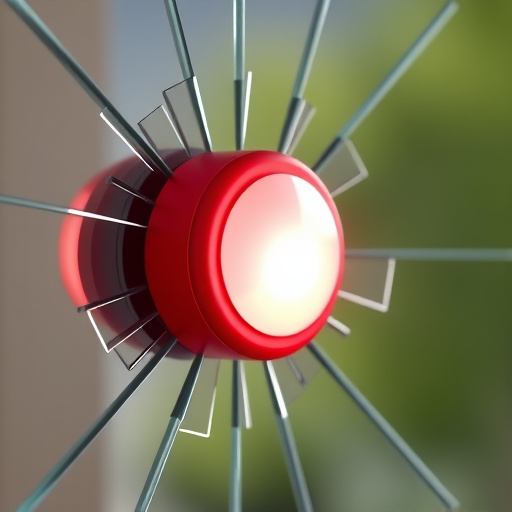Glass break alarm sensors are advanced security tools that swiftly detect and respond to broken glass with high accuracy. Strategically placed near windows or doors, they analyze sound patterns using sensitive microphones and algorithms to trigger alarms immediately. These systems offer two main types of sensors – impact and fracture – each with different false alarm probabilities. Installation involves wireless placement near vulnerable glass areas, following manufacturer guidelines for optimal performance. Regular maintenance ensures continuous protection against burglars, making these sensors ideal for high-value locations like retail stores or homes with valuable artifacts.
“Uncover the power of protection with Glass Break Alarm Sensors – innovative technology designed to safeguard your spaces. This comprehensive guide explores the inner workings of these sensors, offering a deep dive into their functionality and impact on home and business security. From various system types to installation tips and a balanced analysis of advantages and limitations, we demystify glass break alarms, empowering you to make informed decisions. Discover why these sensors are essential for enhancing your safety and peace of mind.”
Understanding Glass Break Alarm Sensors: How They Work
Glass break alarm sensors are a key component in home and business security systems, designed to detect and respond to glass breakage with rapid accuracy. These innovative devices operate by utilizing advanced technology to monitor sound waves refracted through glass surfaces. When a break occurs, the sensor swiftly analyzes the distinct sound pattern, triggering an immediate alarm response.
The sensors are strategically placed near windows or glass doors, often equipped with sensitive microphones and powerful algorithms. They continuously listen for any abrupt changes in sound patterns caused by breaking glass. This technology ensures that potential intruders cannot go unnoticed, providing a critical early warning system for property owners and security personnel.
Types of Glass Break Alarm Systems: A Comparative Analysis
Glass break alarm systems are designed to detect and respond to broken glass, offering enhanced security for homes, businesses, and public spaces. These systems typically employ two primary types of sensors: impact sensors and fracture sensors. Glass break alarm sensors utilizing impact technology detect sudden vibrations caused by breaking glass, while fracture sensors identify microscopic changes in the glass’s structure during a break.
Impact sensors are highly sensitive to rapid movements and can be easily installed on windows or doors. They are effective against sharp impacts but may produce false alarms from tremors or heavy objects. Fracture sensors, in contrast, are less prone to false triggers and can detect subtle changes over time, making them ideal for areas where glass is more susceptible to gradual damage. This type of sensor is particularly useful for detecting broken glass that remains intact, such as when a pane is chipped or cracked. A comparative analysis reveals that the choice between impact and fracture sensors depends on specific security needs, environmental factors, and budget considerations.
Installing and Maintaining Glass Break Alarms Effectively
Installing a glass break alarm system effectively requires careful planning and adherence to manufacturer guidelines. The process involves strategically placing sensors on or near windows and glass doors, ensuring they detect any rapid vibration or shock that indicates a break. These sensors are typically wireless, making installation straightforward, especially in hard-to-reach areas. During setup, it’s crucial to follow the instructions provided with your specific glass break alarm sensor, considering factors like battery life, range, and compatibility with existing security systems.
Regular maintenance is equally vital for optimal performance. This includes periodic testing of sensors by simulating a break to ensure they trigger accurately. Cleaning the sensors from dust or debris and inspecting them for any signs of damage or malfunction are also part of routine upkeep. Additionally, keeping backup batteries on hand and replacing them as recommended by the manufacturer guarantees uninterrupted protection.
Advantages and Limitations: Why Choose a Glass Break Alarm System?
Glass break alarm systems offer a unique and powerful security solution, particularly for areas with large glass panels or windows. One of the primary advantages is their ability to detect rapid pressure changes caused by broken glass, providing an immediate alert—a feature that traditional smoke or carbon monoxide detectors lack. This makes them highly effective in deterring burglars and responding swiftly to potential threats.
However, there are limitations to consider. These systems require proper placement of sensors near windows or glass surfaces, which might not be feasible in all spaces. Additionally, false triggers can occur due to environmental factors like strong winds or household objects accidentally setting off the sensor. Despite these drawbacks, glass break alarms are an excellent choice for enhanced security, especially in retail stores, banks, and homes with valuable artifacts, offering peace of mind and a robust defense mechanism.
